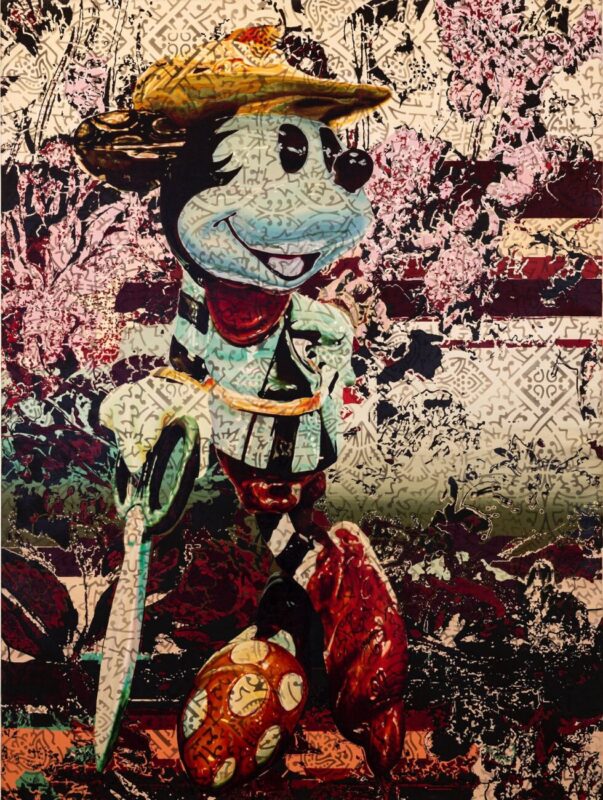MILAN – The works of Paola Angelini, Rafael Megall, Justin Mortimer, Nicola Samorì, Vibeke Slyngstad and Ruprecht von Kaufmann are the protagonists of the group exhibition “On the Wall”, curated by Demetrio Paparoni and hosted by BUILDING Gallery in Milan
Text by: Domenico Costantini
The exhibition project, which includes more than forty works by contemporary artists who use figurative painting in profoundly different ways, this exhibition has been specially designed for the forth floor of BUILDING Gallery.
On the Wall exhibits the work of a single artist in his unpredictable formal variations in linguistic and conceptual variations. For how long than the medium used by the artists in this group show will be painting, the exhibition makes clear a strong diversification of languages and intentions of the artists in this show.

In Justin Mortimer‘s paintings we see a sick man lying in bed, next to medical equipment or objects such as a mobile phone or a computer that refer to the contemporary world. The artist’s childhood was marked, among other things, by surgery on a leg due to complications during childbirth and the trauma of the various treatments and operations that accompanied him throughout his life.

Vibeke Slyngstad, on the other hand, shows us fragments of landscapes seen through a photographic lens that captures glimmers of light, glimmers that the artist lets into the painting, thus declaring that she has used the filter of an electronic medium. Yet this is her way of relating to romanticism.

Rafael Megall tells the present with a clear references to the Armenian culture, trapping images in a network of decorations that belong to his tradition. Images that are, however, also influenced by suggestions originating in the cinema or the world of cartoons.

For his part, Nicola Samorì manipulates the history of art by rewriting the individual narrative chosen, from time to time they become the subject of his paintings. These narratives do not prevent him to create his work filling it with conceptual implications and making it a pretext for questioning the language of art.

Paola Angelini gives substance to another reality, in which memories interact with her imagination and with the suggestions of early 20th-century Italian art history. The three-dimensional definition of space tends to bring the image back to reality as much as the dominant colours, always accentuated by contrasts, this tend to create an atmosphere that leads the image into the sphere of the intangible, between dream and memory.

Moving in the wake of German Expressionism and contaminating his figuration with the formal dynamics of abstraction, Ruprecht von Kaufmann stages the relationship between human and non-human, with particular attention to the wounds inflicted on nature. A dramatic painter, von Kaufmann works on the idea of the sacred bond that connects the human being with the animal, vegetable and mineral world.


